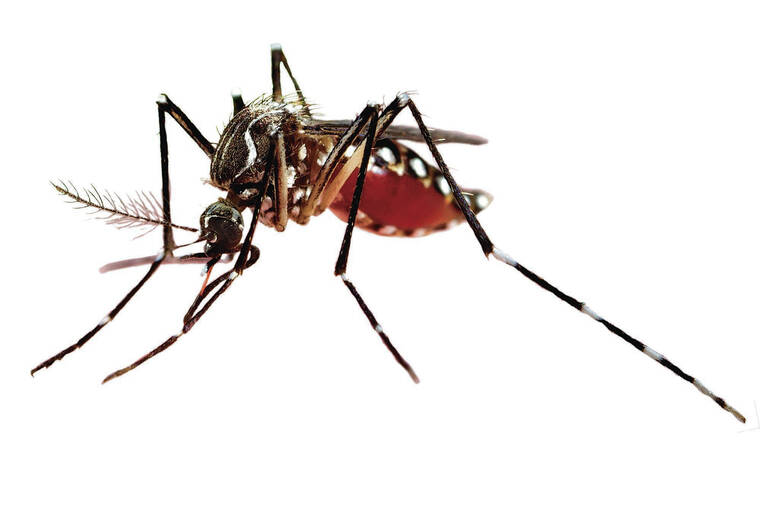A state Circuit Court judge Tuesday rejected an attempt to block state and private conservation officials from releasing millions of mosquitoes into the forests of East Maui.
First Circuit Court Judge John Tonaki ruled in favor
of the state Department of Land and Natural Resources and the American Bird Conservancy, saying the environmental assessment prepared for the project
is sufficient.
Tonaki issued his final judgment Tuesday but earlier granted the state’s motion for summary judgment, heading off the need to go
to trial.
The project aims to save rapidly diminishing native Hawaiian honeycreeper forest birds from extinction, but a Maui-based group called Hawaii Unites went to court to stop it, describing the effort as an experiment that could go wrong and that needs more study.
In March the state Board of Land and Natural Resources approved a final
environmental assessment describing the project and formally declared it would have no significant impact.
The proposed action, outlined in the document, uses what’s known as the Incompatible Insect Technique to control
mosquito-born avian malaria. The technique consists of repeatedly releasing incompatible male mosquitoes that reduce the reproductive potential of wild mosquitoes.
Under the proposal, only laboratory-raised male mosquitoes, which do not bite birds or people and do not transmit diseases, would be released. The males would mate with wild female mosquitoes, whose eggs would not hatch.
When conducted repeatedly over time, releases of incompatible mosquitoes are expected to suppress the wild mosquito population by as much as 90%, according to the project’s plan.
But Hawaii Unites filed
a claim arguing that the
environmental document doesn’t have enough science and documentation to back up its claims of being safe for the environment. The claim says the BLNR erroneously accepted the document and erroneously issued a finding of no significant impact.
Hawaii Unites founder Tina Lia this week called the judge’s ruling “a flawed decision” and asked supporters for donations to help pay for an appeal.
Lia said she believes the project’s facts and assertions are flawed.
“I think they are afraid to face us in trial,” she said of the defendants in a radio broadcast.
BLNR Chair Dawn Chang described the ruling as a victory for endangered
forest birds.
“Historically, mosquitoes were absent from higher elevations due to cooler temperatures. However, climate change has warmed these elevations which now provides favorable conditions for mosquitoes to spread avian malaria to this vulnerable bird species,” Chang said in a news release.
Chang said IIT is the most effective and safe technique available for controlling mosquito populations and has been used successfully around the world.
“This decision is a
significant step in ensuring the long-term survival of Hawaiian honeycreepers and the ecological and biocultural role these birds provide for the people of Hawaii,” said Earl Campbell of the U.S. Fish and Wildlife Service, one of the federal partners in the Birds, Not Mosquitoes coalition, which is spearheading the project.
The plaintiffs argued that the project deserves a more comprehensive environmental impact report that would provide the kind of scientific study needed to determine whether the mosquito technique was safe for Maui’s environment, the birds and humans.
In his ruling, Tonaki said the information in the final environmental assessment is sufficient to enable BLNR to fully consider the environmental factors involved and to make a reasoned decision.
The plaintiffs argued that the FEA did not adequately disclose or failed to address numerous issues, he added.
“These arguments are based on their belief and their expert’s belief. A reading of the FEA reveals that many of the alleged issues raised by Plaintiff, were, in fact, addressed in the FEA and that some of the potential impacts of the project were raised as mere possibilities by Plaintiff,” the judge said in his Jan. 29 minute order.

